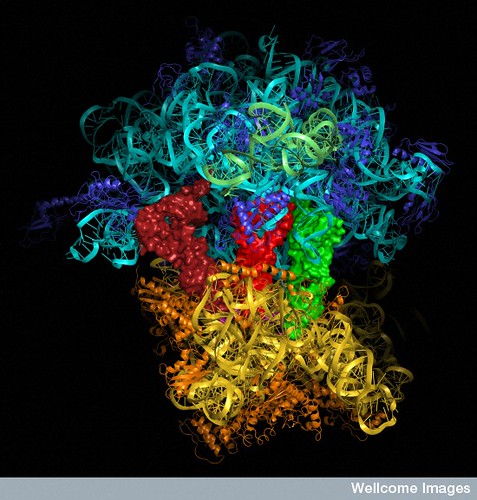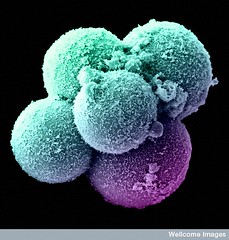When Jens Hauser gave a seminar here at Medical Museion last spring, he talked, among other things, about his next exhibitíon — on skin. His idea of exploríng skin “as a place where art, science, philosophy and social culture meet” is now becoming realised in Liverpool (UK) under the title of sk-interfaces.
“What used to be understood as a surface that represents the limit of the self and between the inside and the outside can today be seen as an unstable border”, says Jens on the website. He has gathered an awesome crew of bio-artists — a few old hats, but mostly exciting new acquaintances — to explore this tough, yet fragile bodily interface:
For example, ORLAN presents Manteau d’Arlequin (Harlequin Coat), a patchwork life-size mantle, which fuses in vitro skin cells from various cultures and species. The Tissue Culture and Art Project’s Victimless Leather are problematizing the concept of ‘garment’ by making it semi-living:

Art Orienté objet have created “biopsied, cultured, hybridized and tattooed skin made from their own epidermis and pig derma to create living biotechnological self-portraits”. In hymNext Designer Hymen Series Julia Reodica uses her own vaginal tissue combined with animal muscle cells to create designer hymens. And so on and so forth.
The director of Liverpool’s Foundation for Art and Creative Technology (FACT) that hosts the exhibition, claims that sk-interfaces pushes “the boundaries of how and what creative technologies and art can be”; he wants to use the exhibition to invite debate and conversation “around life sciences and our changing relationships with our bodies and technology”.
Here is the full list of confirmed art works at the exhibition:
Art Orienté objet (France) Cultures de peaux d’artistes, Roadkill Coat
Zbigniew Oksiuta (Poland) Breeding Spaces
Yann Marussich (Switzerland) Bleu Remix
Julia Reodica (USA) hymNext Designer Hymen Series
Jun Takita (Japan) Light only Light
Tissue Culture and Art Project (Oron Catts and Ionat Zurr) (Australia) Victimless Leather
ORLAN (France) Manteau d’Arlequin
Neal White (UK) Truth Serum
Wim Delvoye (Belgium) Sybille
Olivier Goulet (France) Skin Bags
Zane Berzina (Latvia) Touch Me Wall
Critical Art Ensemble (US)
Eduardo Kac (Brazil)Telepresence Garment
Maurice Benayoun and Jean-Baptiste Barriere (France) World Skin: A Photo Safari in the Land of War
Jill Scott E-skin: Somatic Interaction
Stelarc Extra Ear: Ear on Arm
The exhibition opens on 1 February and runs until 31 March. The week after the opening, FACT is organising a conference to examine the topics and issues surrounding this exhibition. They are also publishing a book by Jens Hauser — SK-Interfaces: Exploding Borders – Creating Membranes in Art, Technology and Society — on Liverpool University Press.
Looks like a three-star exhibition, i.e. worth a travel.



